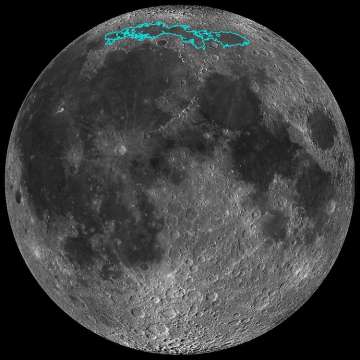In what comes as a terrifying development, researchers have found out that the Moon is steadily shrinking which is leading to earthquakes. According to an analysis of imagery captured by NASA's Lunar Reconnaissance Orbiter (LRO), the surface of the Moon is wrinkling as its interior cools are causing faults to form on its brittle surface. When enough stress builds, it releases the quakes.
The study was revealed after a survey of over 12,000 images, that showed lunar basin Mare Frigoris near the Moon's north pole.
This pole is one of many vast basins, long assumed to be dead sites from a geological point of view.
Unlike the Earth, Moon doesn't have tectonic plates. Instead, its tectonic activity occurs as it slowly loses heat from when it was formed 4.5 billion years ago.
This, in turn, causes its surface to wrinkle, similar to a grape that shrivels into a raisin.
Since the Moon's crust is brittle, these forces cause its surface to break as the interior shrinks, resulting in so-called thrust faults, where one section of the crust is pushed up over an adjacent section.
As a result, the Moon has become about 150 feet "skinnier" over the past several hundred million years.
Image shows formation of wrinkle ridges, curved hills and shallow trenches as the Moon loses heat
The first seismic activity on the Moon was measured by the Apollo astronauts in the 1960s and 1970s, which found out that vast majority had occurred deep in the body's interior while a smaller number were on its surface.
The analysis was published in Nature Geoscience and examined the shallow moonquakes recorded by the Apollo missions, establishing links between them and very young surface features.
"It's quite likely that the faults are still active today," said Nicholas Schmerr, an assistant professor of geology at the University of Maryland who co-authored the study.
"You don't often get to see active tectonics anywhere but Earth, so it's very exciting to think these faults may still be producing moonquakes."
